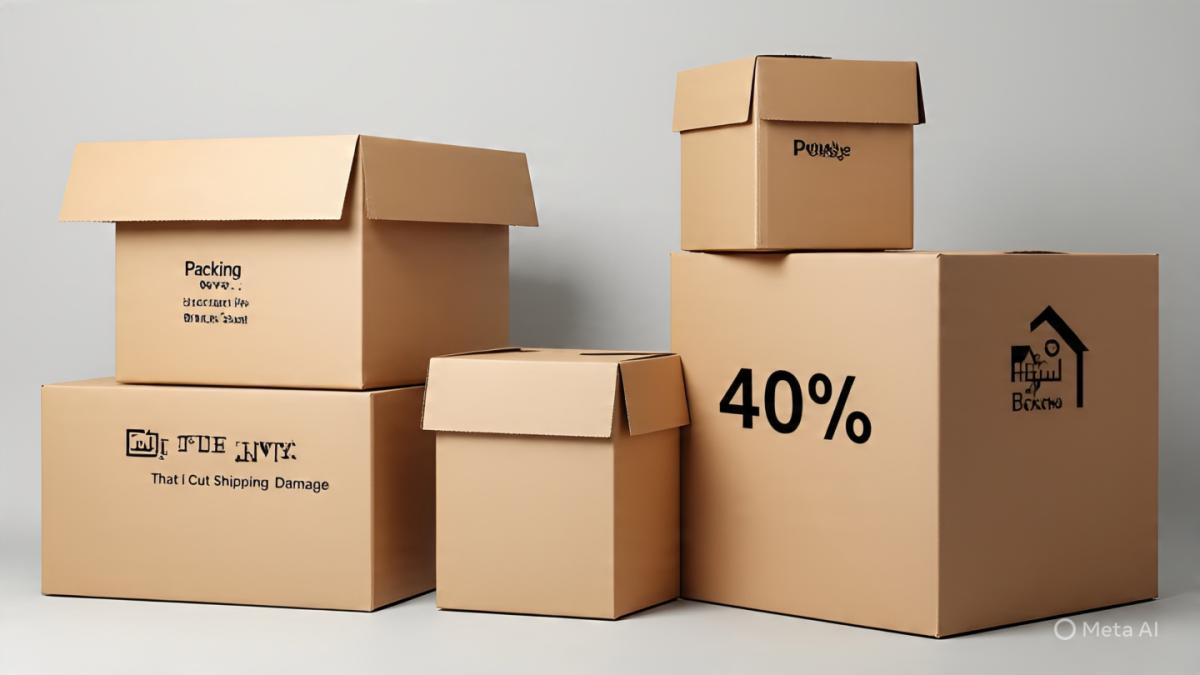Packing Boxes: Five Structural Hacks That Cut Shipping Damage 40%

Introduction: The Real Cost of Poor Packaging
When products arrive damaged, it’s not just the item that suffers—it affects customer trust, operational costs, and environmental waste. According to a 2024 Disk.com logistics study, nearly 11% of all eCommerce packages incur some form of transit damage. That’s a major hit to profits and brand reputation.
The solution lies in structure. Smart design choices in packing boxes can significantly reduce the chances of damage—by as much as 40%, based on industry data. In this article, we’ll explore five proven structural hacks that can boost your packaging's protection power, with detailed insights into materials, testing, sustainability, and smarter fits.
Why Structural Design Matters
Shipping is rough. Packages go through conveyor drops, stacking in cargo holds, forklift handling, and environmental stress. A box’s structure determines whether it holds or collapses.
Poorly designed packaging costs businesses millions annually in refunds and returns. Even a high-quality product won't survive long if it's in a weak box. That’s why packaging companies in UAE and globally are investing in advanced materials and structural enhancements.
Hack #1: Choose the Right Box Strength
Understanding box strength starts with two key metrics: Burst Strength (Mullen Test) and Edge Crush Test (ECT).
Burst Strength measures resistance to internal pressure and punctures. It’s rated in pounds per square inch (lb/in²). Edge Crush Test, on the other hand, measures how much vertical stacking pressure the box can withstand, rated in lb/in.
Tip: Always read the Box Manufacturer’s Certificate (BMC) on the bottom flap. It includes strength ratings and helps you match box type to product weight.
Hack #2: Customize Fit with Die-Cut Inserts
Die-cut packaging involves precision-cut boxes and inserts tailored to a specific product shape. This dramatically reduces empty space, minimizing internal movement during transit.
Custom die-cut inserts also help organize items neatly and add a premium feel.
Window Cutouts – Pros and Cons
Pros:
- Improves product visibility.
- Enhances shelf appeal.
- Reduces return rates due to clear display.
Cons:
- May compromise structural integrity.
- Reduces recyclability if plastic windows are used.
- Adds cost if complex shapes are needed.
Recommendation: For eco-conscious packaging, use recyclable window patching film instead of rigid plastics. If using die-cut boxes for luxury goods, ensure they meet strength requirements as well.
Hack #3: Reinforce with Internal Cushioning
The best external structure means little if internal support is missing. Use the right cushioning material to protect against impact.
Common Materials Include:
- Foam inserts for electronics and glass.
- Inflatable air pillows for general items.
- Corrugated dividers for multi-product packaging.
- Double-boxing is another effective strategy. It involves placing a smaller box inside a larger one with padding between them. Ideal for fragile or expensive items over 50 pounds.
Best Practices:
- Fill all voids to prevent bounce.
- Use corner and edge padding for sensitive items.
- Don't over-pad—excessive bulk increases shipping costs.
Industry Insight: Fragile items packed with cushioning and double-boxed showed 35% to 50% fewer returns (ACS Industrial Packaging Study, 2024).
Hack #4: Use Certified Sustainable Materials
Sustainable packaging isn’t just about going green—it’s about using responsibly sourced materials that also deliver performance.
FSC and PEFC certifications assure that the packaging material comes from sustainably managed forests.
Sustainability Stamp Checklist:
FSC 100%: Material sourced entirely from FSC-certified forests.
FSC Mix: Combines certified, recycled, and controlled sources.
FSC Recycled: Fully made from post-consumer or post-industrial fibers.
PEFC Logo: Traceable chain of custody with certification ID.
Date or batch region should be visible for full transparency.
Tip: Ask your box supplier to provide documentation to verify these stamps. Many custom packaging suppliers now include them by default, especially for export markets.
Hack #5: Test and Monitor Regularly
No design is complete without validation. Box strength must be tested in real conditions before full deployment.
Essential Tests:
Drop Test: Simulates accidental drops from various heights.
Box Compression Test (BCT): Tests the top-down crush resistance.
Stacking Test: Evaluates how many units can be stacked without collapsing.
Vibration Test: Simulates shipping vibrations.
Tracking damage across shipments helps identify flaws in packaging. Disk.com’s 2024 study showed that regular box testing and refinement reduced damage claims by 28% in high-risk categories like electronics and appliances.
Best Practice: Establish quarterly reviews of packaging performance, especially after new product launches or material changes.
Packaging Efficiency vs. Cost Trade-Off
Many businesses cut costs by choosing lighter, cheaper boxes. However, initial savings are often lost to higher return rates and product damage.
Packaging ROI isn’t just the box cost—it's the total cost of protection. This includes damage rates, labor, storage, and customer retention.
Dos and Don’ts
- Do compare box upgrade costs with savings on returns.
- Don’t sacrifice structure for aesthetics alone.
- Do test new packaging with pilot shipments before scaling.
For many businesses, working with packaging companies in uae ensures local customization and faster delivery turnaround.
Final Thoughts: Build Smarter, Not Just Stronger
Reducing shipping damage starts with smarter structural choices. By upgrading box strength, adding precise inserts, cushioning wisely, using certified materials, and testing thoroughly, you can cut shipping damage by up to 40%.
Every improvement leads to less waste, happier customers, and more sustainable operations. Packaging is not just a box—it’s the product’s armor.
